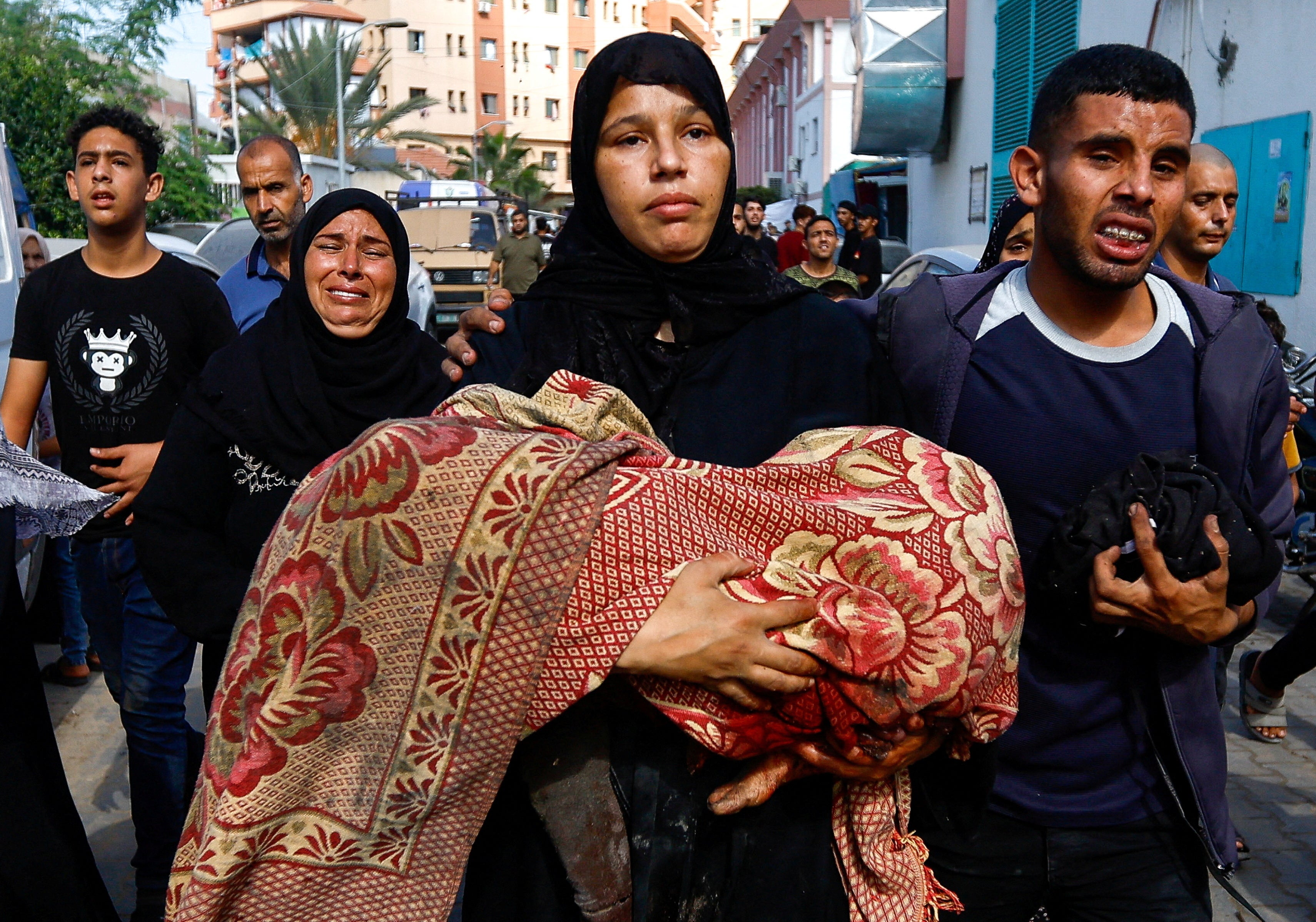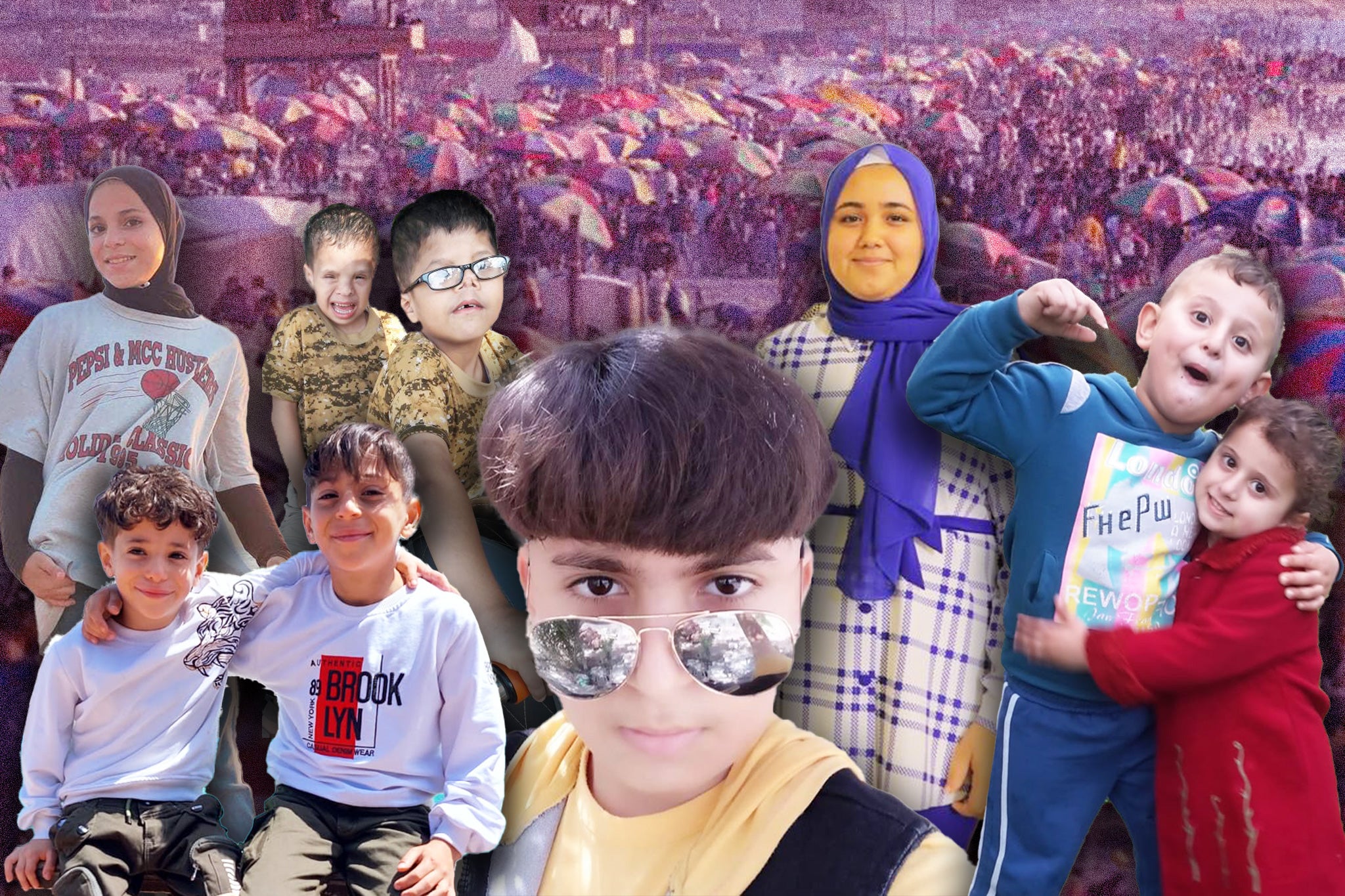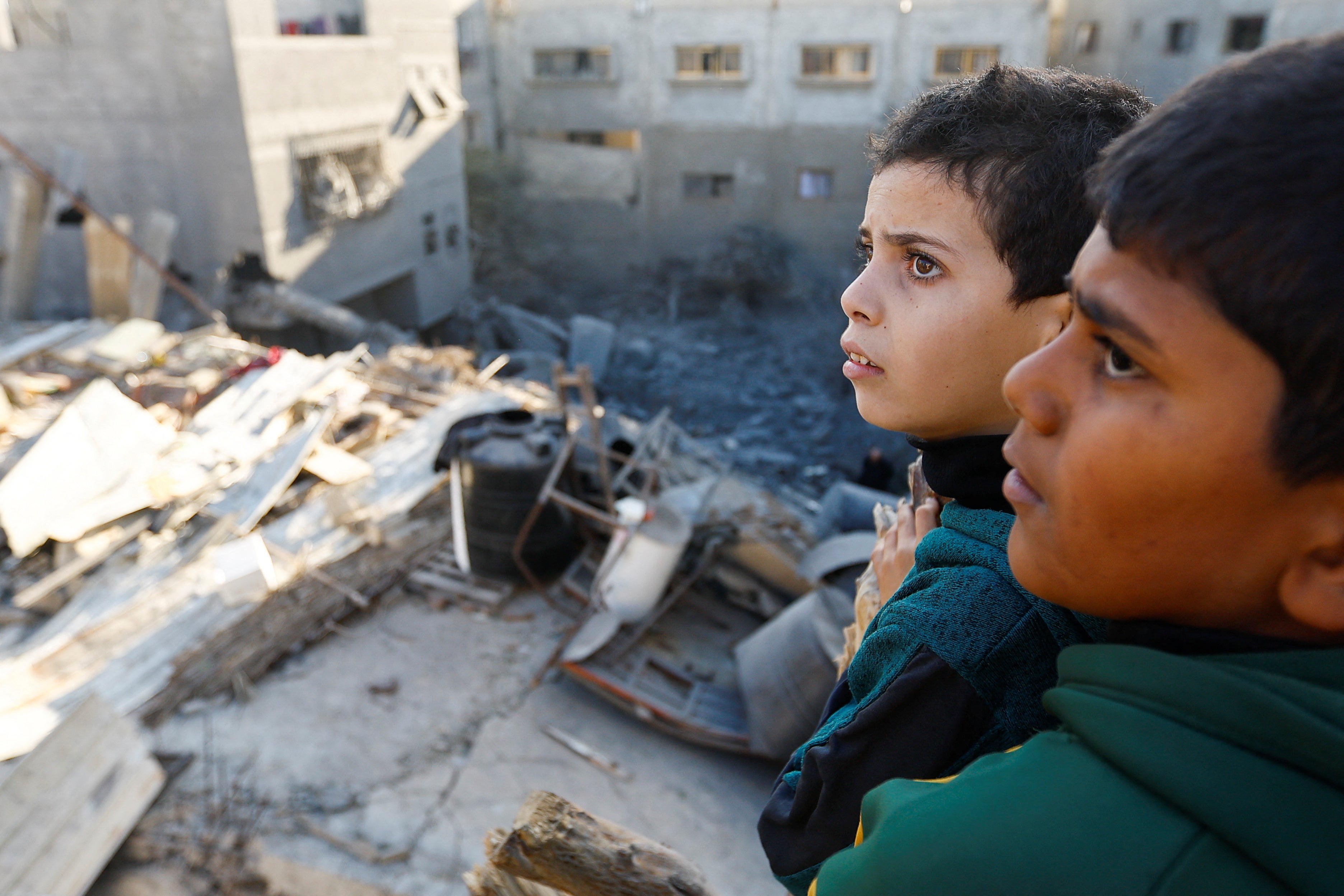The Independent's journalism is supported by our readers. When you purchase through links on our site, we may earn commission.
We couldn’t write obituaries for all the children killed in Gaza, so we marked the lives of just a few
By telling the stories of just nine children, we hoped to learn something about the thousands more who died in this war. Richard Hall writes

Your support helps us to tell the story
From reproductive rights to climate change to Big Tech, The Independent is on the ground when the story is developing. Whether it's investigating the financials of Elon Musk's pro-Trump PAC or producing our latest documentary, 'The A Word', which shines a light on the American women fighting for reproductive rights, we know how important it is to parse out the facts from the messaging.
At such a critical moment in US history, we need reporters on the ground. Your donation allows us to keep sending journalists to speak to both sides of the story.
The Independent is trusted by Americans across the entire political spectrum. And unlike many other quality news outlets, we choose not to lock Americans out of our reporting and analysis with paywalls. We believe quality journalism should be available to everyone, paid for by those who can afford it.
Your support makes all the difference.How do you memorialise a life that has only just begun? Perhaps only a parent could be worthy of such a task – someone who has watched their child grow and laugh and change each day in a thousand tiny ways. But what if the parent was killed along with their child? Who, then, can do that story justice?
These are the questions we asked ourselves in the process of writing about children killed by Israel’s war in Gaza. More than 7,000 young lives have been extinguished in the conflict, a number so large that it obscures the tragedy of each one. The United Nations has called Gaza “a graveyard for children”, but the reality is much worse than that; the scale of the killing has meant that many were not granted the dignity of a grave. Some were buried where they were found, and thousands of others still lie beneath the rubble.
By telling the stories of just nine children, we hoped to learn something about the thousands more who died in this war. If we wrote about their lives, short as they were, we might elevate them from numbers on a page to living, breathing, human beings. One project, called Martyrs of Gaza, is attempting to do that on a much larger scale.
A horrifying challenge we faced in writing about the bright lives of these children is that most of their parents were killed alongside them. That left us to talk with extended family, such as aunts, uncles and grandparents. While their love for these children was unquestionable, many struggled in their grief to describe what made them unique – qualities, obsessions and traits that a parent or sibling would see daily. What emerged were kind-hearted generalities: “He was a typical kid,” they would say, or “She was very smart” or “She loved her dad.”
And so we focused on small details. We asked the families for the little moments they remembered spending with these children. Mahmoud Alkrunz recalled a camping trip with his nephew Omar when he would not stop making loud animal noises. Hani Almadhoun remembered his niece, Siwar, doting on his daughters when they visited Gaza for a summer. We also learned about the difficulties they faced in their last weeks of life, about how they tried to be brave for their parents, how they saw their family killed before them, and how in the case of eight-year-old Ghina Alkrunz, they died hungry.
We learned that some families searched under the rubble for days to find their bodies. Omar Almadhoun had been thrown so far from the house by the explosion that his body was found by a stranger, outside of the search area, some 20 metres away. It took several days for them to find his brother Ali. The children’s grandmother guarded the ruins of their family home to stop the dogs from finding the remains before they did.

These moments tell us something about the young lives that were taken in Gaza, but they do not answer the bigger question. Why are so many children being killed in the first place?
Some underlying reasons provide context. Firstly, Gaza is one of the most densely populated territories in the world. Some 2.2 million people called the 25-mile-long strip home, any kind of conflict in such a location is bound to cause large-scale civilian casualties. Furthermore, nearly half of that population are children, meaning they will make up a significant number of the casualties. Indeed, women and children represent around 70 per cent of the deaths in Gaza since 7 October. Second, Hamas is not a traditional army and does not fight out in the open, in uniform. They move among the population and through a tunnel network. Many Hamas targets would therefore likely be close to civilian infrastructure.
But even taking those factors into account, civilians are being killed at a historic pace in Gaza – far outstripping previous conflicts there, and other recent wars such as the US in Afghanistan or against Isis in Syria and Iraq.
The scale of the bombing in Gaza is one of many indications that Israel has decided that this high civilian toll, including the deaths of thousands of children, is a price worth paying to achieve its military goals there.
This war, launched in response to the massacre of more than 840 civilians and 300 soldiers and security personnel, and the kidnap of more than 200 others, was described by Israeli prime minister Benjamin Netanyahu as a fight against “the enemies of civilization itself.” The Israeli army has denied targeting civilians, and instead blames Hamas for using civilians as human shields. Israel has also said that it cannot be blamed for civilians killed in areas that it ordered evacuated, such as northern Gaza. But in the course of this war, it has bombed those supposed safe areas, too, including hospitals, mosques, UN schools and shelters.

Israeli officials have publicly declared that it has placed less of an emphasis on accuracy than in previous fights. On 10 October, just three days after the Hamas attack and before Israel had launched its ground invasion, IDF spokesperson Daniel Hagari said that “thousands of tonnes of munitions” had been used in Gaza, adding that “while balancing accuracy with the scope of damage, right now we’re focused on what causes maximum damage”.
Maximum damage, on the ground in Gaza, means rows upon rows of tiny bodies, lifeless and covered in dust.
Several investigations into Israel’s selection of targets in Gaza have also found that it has expanded its list of acceptable targets for strikes from military and Hamas infrastructure to so-called “power targets,” which include “private residences as well as public buildings, infrastructure, high-rise blocks” and operatives’ homes,” according to the Israeli +972 Magazine. The same investigation – the findings of which were corroborated by The Guardian – found that the Israeli army has been using artificial intelligence to identify and select a huge number of targets, at a much faster rate than a human.
According to Jan Egeland, secretary general of the Norwegian Refugee Council, the resulting bombardment “now ranks amongst the worst assaults on any civilian population in our time and age. Each day we see more dead children and new depths of suffering for the innocent people enduring this hell.”
In such an environment, Gaza’s children didn’t stand a chance.
Their obituaries should have been much longer. We learned what they did at school, how they used to spend their free time at the beach or camping, and the toys they liked the most. But they should have contained stories about graduations, weddings, travel abroad – and their own children should have been there to tell them.
Join our commenting forum
Join thought-provoking conversations, follow other Independent readers and see their replies
Comments